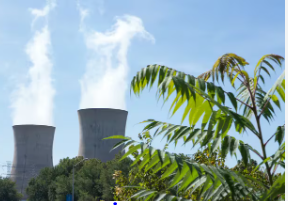In a groundbreaking initiative, Microsoft has announced plans to repurpose the site of the infamous Three Mile Island nuclear plant into a state-of-the-art data center. This bold move not only signifies a remarkable transformation of a site once associated with nuclear disaster but also highlights Microsoft’s commitment to sustainable and innovative solutions in the tech industry.
Historical Context
Three Mile Island, located in Pennsylvania, was the site of the most serious accident in U.S. commercial nuclear power plant history in 1979. The partial meltdown of Reactor 2 led to widespread public fear and significant changes in nuclear regulatory policies. For decades, the site has been a symbol of the potential dangers of nuclear energy.
The Vision
Microsoft’s vision for Three Mile Island involves converting the decommissioned nuclear plant into a cutting-edge data center. This project is part of Microsoft’s broader strategy to expand its data center infrastructure while adhering to its sustainability goals. The company aims to leverage the existing infrastructure and the site’s robust power capabilities to support its growing cloud services.
Key Benefits
- Sustainability:
- Renewable Energy Integration: Microsoft plans to integrate renewable energy sources, such as solar and wind, to power the data center. This aligns with the company’s goal to be carbon negative by 2030.
- Efficient Cooling Solutions: The proximity to the Susquehanna River provides an opportunity for innovative cooling solutions, reducing the energy required to maintain optimal temperatures for servers.
- Economic Impact:
- Job Creation: The project is expected to create numerous jobs during both the construction and operational phases, providing a significant economic boost to the local community.
- Revitalization: Transforming a site with a troubled past into a hub of technological innovation can revitalize the region and attract further investments.
- Technological Advancements:
- Advanced Infrastructure: The data center will feature the latest advancements in server technology, cybersecurity, and data management, ensuring high performance and reliability.
- Research and Development: Microsoft plans to use the site for research into new data center technologies, including energy efficiency and AI-driven management systems.
Challenges and Considerations
While the project holds immense promise, it also comes with challenges. Ensuring the safety and stability of the site, given its history, is paramount. Microsoft will need to work closely with regulatory bodies to address any environmental and safety concerns. Additionally, the integration of renewable energy sources and innovative cooling solutions will require significant investment and technological innovation.
Conclusion
Microsoft’s initiative to harness Three Mile Island for data centers is a testament to the company’s forward-thinking approach and commitment to sustainability. By transforming a site once synonymous with disaster into a beacon of technological progress, Microsoft is not only addressing its own infrastructure needs but also setting a powerful example of how innovation can drive positive change.
This project underscores the potential for repurposing historical sites for modern needs, blending the past with the future in a way that benefits both the environment and the economy.
